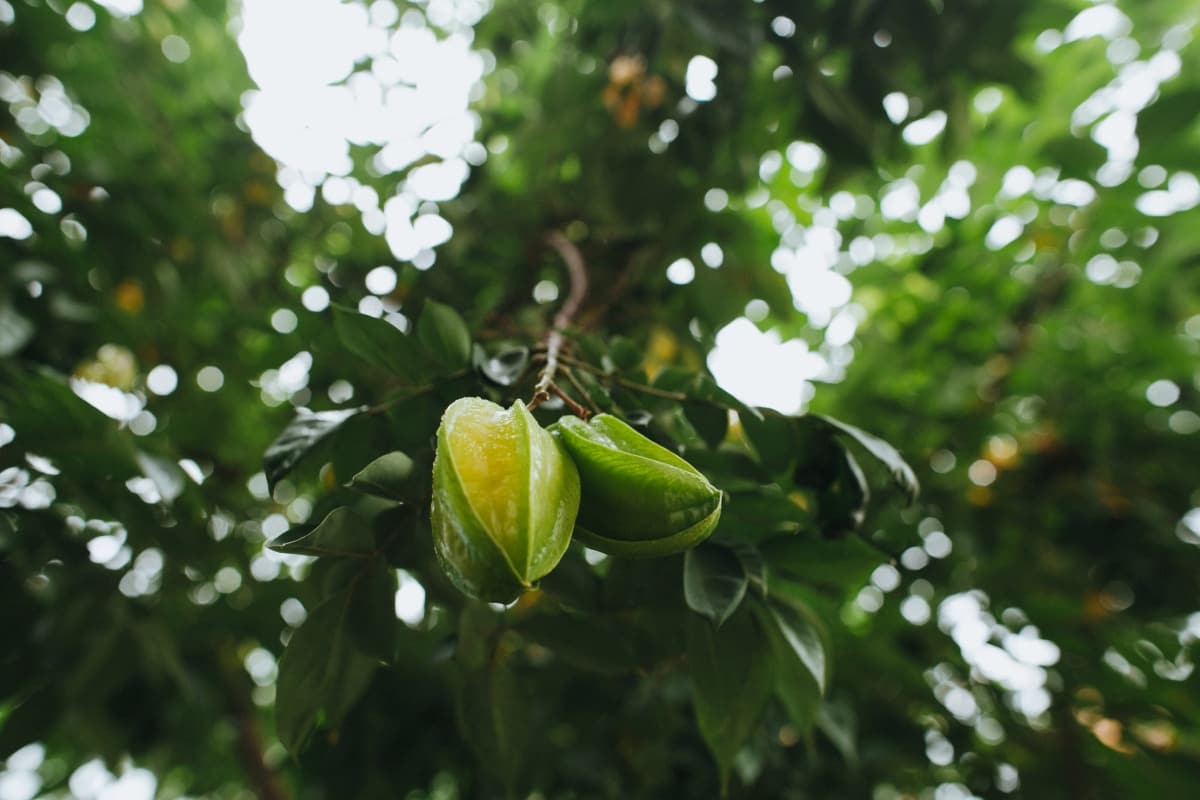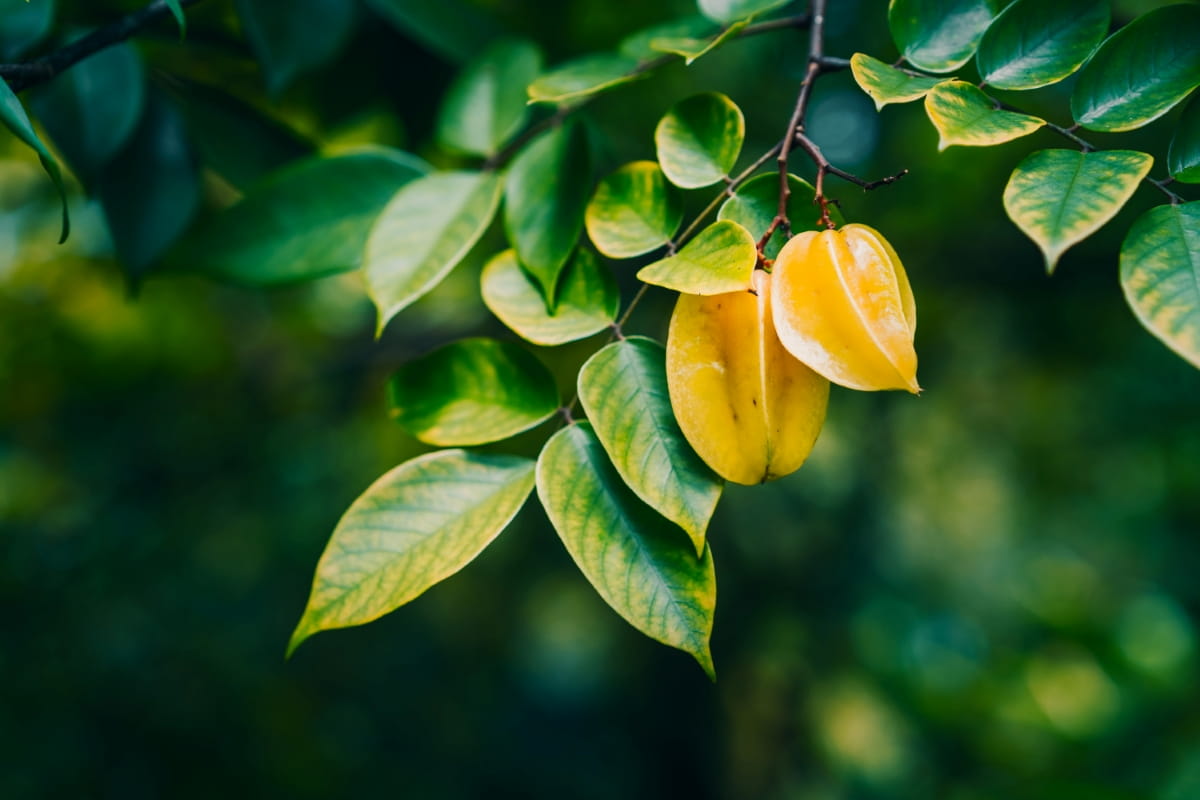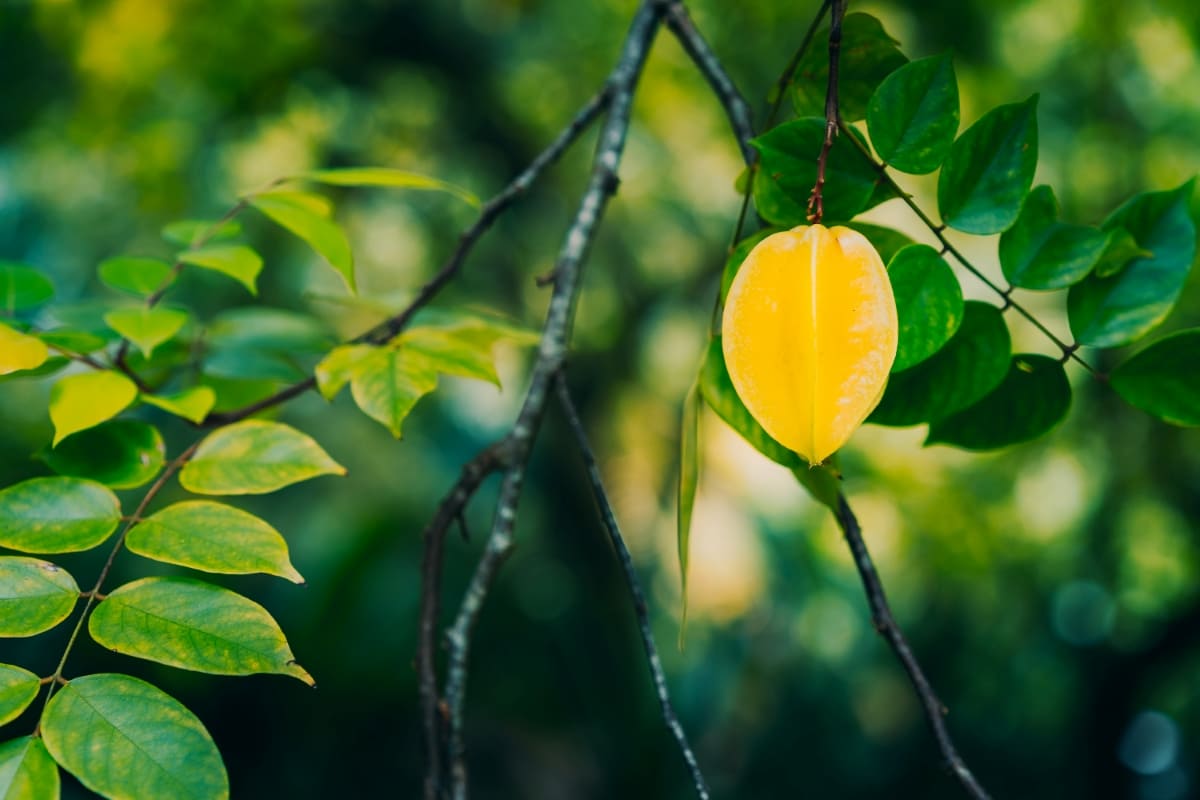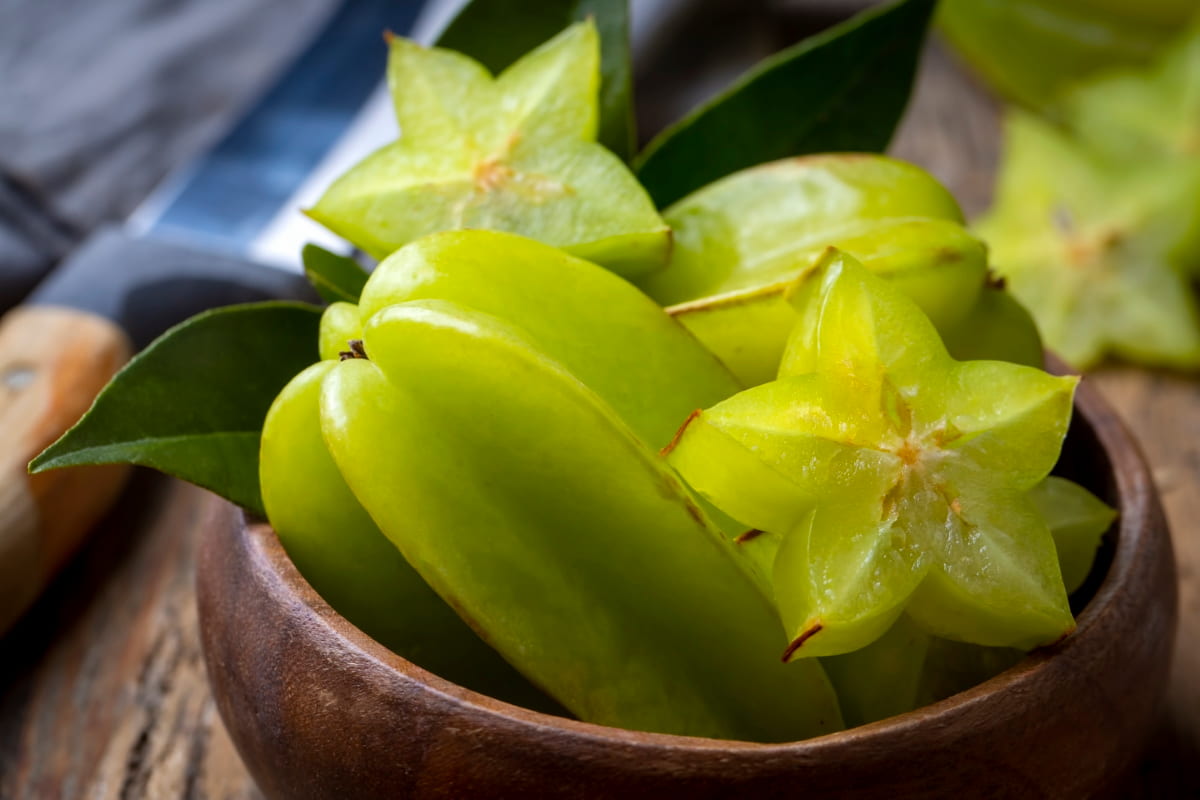Controlling pests on carambola, commonly known as star fruit, is essential for maintaining healthy and productive trees. Carambola is a tropical fruit tree susceptible to various pests that can damage its leaves, fruit, and overall health. While chemical pesticides are a conventional method for pest control, many people prefer to use natural and organic treatments to minimize the environmental impact and ensure the safety of the fruit. In this guide, we’ll explore some natural and organic methods to control carambola pests and protect your trees and fruit.

How to Control Carambola Pests Naturally
Carambola/Star Fruit Pests: Identifying the Most Common Pests and Their Impact on Your Crop
- One common pest is the sulfur-crested cockatoo, a large bird that can damage the fruit by pecking at it.
- Fruit fly infestations are also a concern, as their larvae burrow into the fruit, causing it to rot.
- Fruit-sucking moths feed on the fruit’s flesh, reducing its market value.
- Fruit-eating caterpillars can be problematic, as they consume the leaves and fruit.
- Green vegetable bugs may pierce the fruit’s skin and suck out its juices, leading to deformities.
- Flatids, with their piercing-sucking mouthparts, can transmit diseases to the star fruit.
- Additionally, red-banded thrips can damage the fruit by feeding on its tissues, causing scarring and discoloration.
Using Neem Oil to Control Carambola/Star Fruit Pests: A Safe and Effective Method
Neem oil is an effective and safe natural solution for controlling carambola (star fruit) tree pests. It is derived from the neem tree and acts as a potent insecticide and repellent. When applied, neem oil disrupts pests’ feeding and reproductive cycles. It is non-toxic to humans, pets, and beneficial insects, making it eco-friendly. Regular application can help deter common pests like aphids, mealybugs, and scales, promoting a healthy carambola crop without harsh chemicals.
The Role of Beneficial Insects in Controlling Carambola/Star Fruit Pests: Introduction of Predatory Insects
Beneficial insects are vital in natural pest control for carambola (star fruit) cultivation. Predatory insects, like ladybugs and parasitic wasps, are introduced into the ecosystem to prey on harmful pests like aphids, mealybugs, and scale insects. These natural enemies maintain a balance in the pest population, reducing the need for chemical pesticides. By integrating these beneficial insects, carambola growers can foster a healthier, more sustainable crop while minimizing the environmental impact and preserving the natural ecosystem.
In case you missed it: How to Control Pear Pests Naturally: How to Get Rid of Them with Natural and Organic Treatment

Companion Planting: How Planting Certain Plants Together Can Deter Carambola/Star Fruit Pests
Companion planting involves strategically planting certain crops alongside carambola (star fruit) to deter pests naturally. Marigolds and basil, for instance, emit scents that repel aphids, mealybugs, and whiteflies that commonly affect carambola. Additionally, aromatic herbs like rosemary and thyme can discourage pest infestations. This organic method protects the star fruit crop from pests and promotes biodiversity, healthier soil, and a more sustainable gardening practice, reducing the need for chemical interventions.
Crop Rotation: How Rotating Your Carambola/Star Fruit Crop Can Help Control Pests
Crop rotation is a practice where carambola (star fruit) is planted in different locations within a garden or orchard over successive seasons. It helps control pests by disrupting their life cycles and reducing the buildup of specific pests in one area. Rotating star fruit with different crops minimizes the likelihood of pests becoming established and is particularly effective against soil-borne pathogens. This natural pest control strategy enhances overall plant health, reduces the need for chemical treatments, and promotes long-term sustainability in carambola cultivation.
Using Diatomaceous Earth to Control Carambola/Star Fruit Pests: A Non-Toxic and Organic Method
Diatomaceous earth (DE) is an eco-friendly and non-toxic carambola (star fruit) pest control method. DE consists of finely ground fossilized diatoms and acts as a natural insecticide. When sprinkled around the base of trees, it dehydrates and damages the exoskeletons of crawling insects, like ants and aphids, causing them to perish. DE is safe for humans, animals, and beneficial insects and is a valuable addition to organic pest management, effectively reducing pest populations while avoiding harmful chemicals.
In case you missed it: How to Control Okra Powdery Mildew Naturally: How to Get Rid of This with Natural and Organic Treatment

Traps and Barriers: How to Use Traps and Barriers to Control Carambola/Star Fruit Pests
Traps and barriers are valuable tools for managing carambola (star fruit) pests. Yellow sticky traps attract flying pests, such as fruit flies and whiteflies, effectively reducing their populations. Physical barriers like row covers can protect star fruit from pest infestations and prevent contact with unwanted insects.
These methods act as a non-invasive and environmentally friendly approach to pest control, minimizing the need for chemical interventions while safeguarding the crop from harmful insects, ultimately supporting a healthier and more productive star fruit orchard.
Biological Control: How to Use Parasitic Wasps to Control Carambola/Star Fruit Pests
Biological control using parasitic wasps is a sustainable method to manage carambola (star fruit) pests. These beneficial insects are natural predators of pests like aphids, scales, and mealybugs. By releasing parasitic wasps into the orchard, they lay their eggs on the pest insects, and their larvae consume the hosts, reducing pest populations. This environmentally friendly approach minimizes the need for chemical pesticides, preserves the ecosystem’s balance, and promotes a healthier carambola crop while safeguarding the environment and beneficial insects.
Integrated Pest Management (IPM): A Holistic Approach to Controlling Carambola/star fruit Pests
Integrated Pest Management (IPM) is a comprehensive carambola (star fruit) pest control strategy combining multiple techniques. It involves regular monitoring to identify pest issues, promoting natural predators, and using eco-friendly practices like companion planting and crop rotation.
In case you missed it: How to Control Fig Pests Naturally: How to Get Rid of Them with Natural and Organic Treatment

Additionally, IPM considers cultural practices and the targeted use of pesticides only when necessary. This holistic approach minimizes environmental impact, reduces the risk to beneficial insects, and safeguards the carambola crop’s long-term health and productivity while minimizing chemical treatments.
Conclusion
In conclusion, controlling carambola (star fruit) pests naturally and organically offers an eco-friendly and sustainable approach to safeguarding your crop. By utilizing the above methods, you can effectively manage pests while preserving the environment and promoting your star fruit orchard’s long-term health and productivity. These techniques provide a healthier and more sustainable way to get rid of pests while minimizing the use of harmful chemicals.
- Beneficial Insects in Pest Management
- Natural Solutions for Pest Control in Flower Gardens
- Types of Fungicides Used in Agriculture
- Common Issues in the Fruit Development Stage of Pomegranate Farming
- Fruit Development Issues in Papaya: Easy Solutions and Treatment
- Soil-Borne Diseases and How to Protect Your Plants
- Practices to Prevent Disease Spread in the Garden
- From Wilted to Thriving: How to Treat Root Rot Naturally in Houseplants
- Natural Remedies to Cure Brown Spots on Fig Tree Leaves